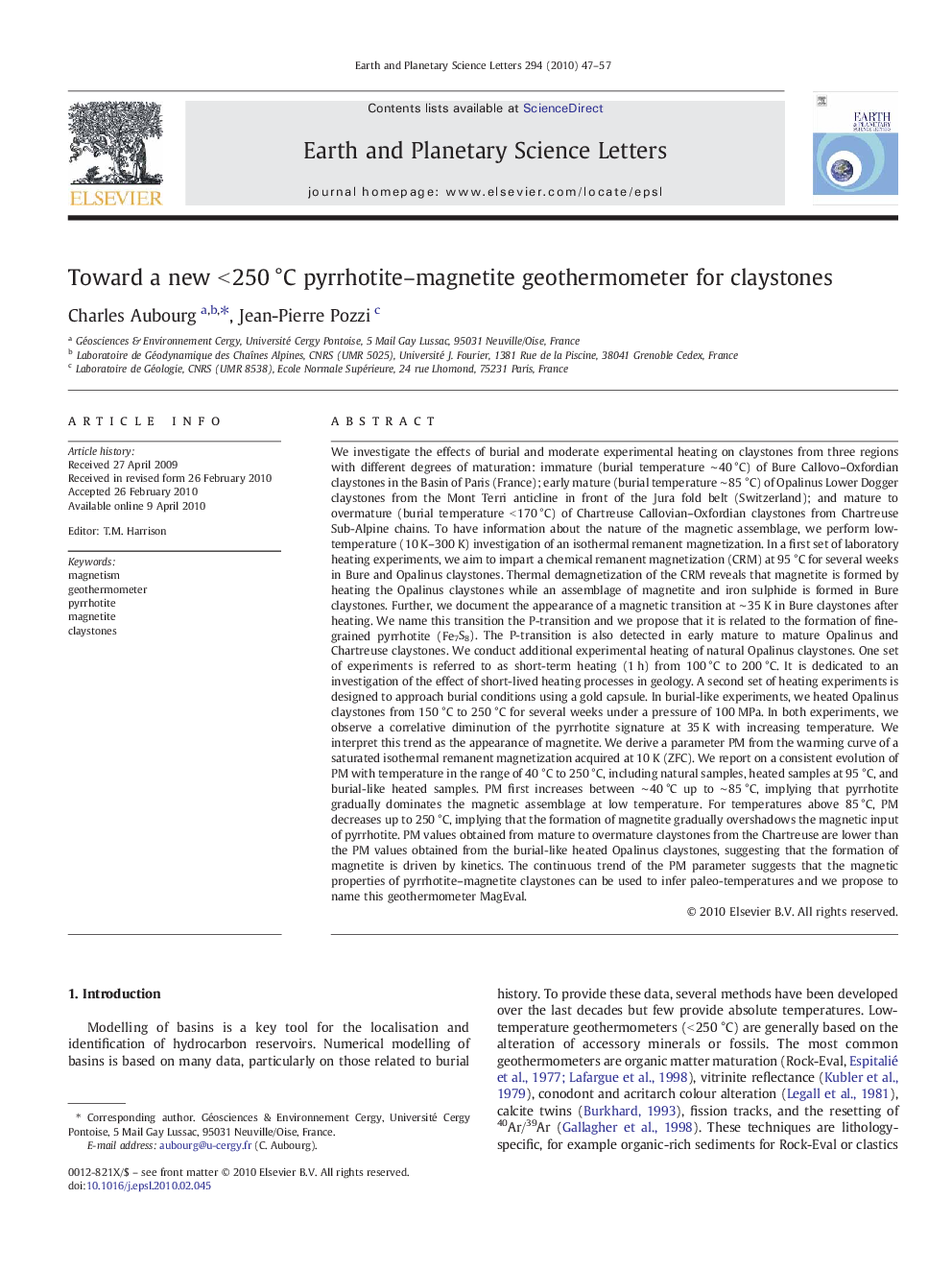| کد مقاله | کد نشریه | سال انتشار | مقاله انگلیسی | نسخه تمام متن |
|---|---|---|---|---|
| 4678660 | 1634852 | 2010 | 11 صفحه PDF | دانلود رایگان |

We investigate the effects of burial and moderate experimental heating on claystones from three regions with different degrees of maturation: immature (burial temperature ∼ 40 °C) of Bure Callovo–Oxfordian claystones in the Basin of Paris (France); early mature (burial temperature ∼ 85 °C) of Opalinus Lower Dogger claystones from the Mont Terri anticline in front of the Jura fold belt (Switzerland); and mature to overmature (burial temperature < 170 °C) of Chartreuse Callovian–Oxfordian claystones from Chartreuse Sub-Alpine chains. To have information about the nature of the magnetic assemblage, we perform low-temperature (10 K–300 K) investigation of an isothermal remanent magnetization. In a first set of laboratory heating experiments, we aim to impart a chemical remanent magnetization (CRM) at 95 °C for several weeks in Bure and Opalinus claystones. Thermal demagnetization of the CRM reveals that magnetite is formed by heating the Opalinus claystones while an assemblage of magnetite and iron sulphide is formed in Bure claystones. Further, we document the appearance of a magnetic transition at ∼ 35 K in Bure claystones after heating. We name this transition the P-transition and we propose that it is related to the formation of fine-grained pyrrhotite (Fe7S8). The P-transition is also detected in early mature to mature Opalinus and Chartreuse claystones. We conduct additional experimental heating of natural Opalinus claystones. One set of experiments is referred to as short-term heating (1 h) from 100 °C to 200 °C. It is dedicated to an investigation of the effect of short-lived heating processes in geology. A second set of heating experiments is designed to approach burial conditions using a gold capsule. In burial-like experiments, we heated Opalinus claystones from 150 °C to 250 °C for several weeks under a pressure of 100 MPa. In both experiments, we observe a correlative diminution of the pyrrhotite signature at 35 K with increasing temperature. We interpret this trend as the appearance of magnetite. We derive a parameter PM from the warming curve of a saturated isothermal remanent magnetization acquired at 10 K (ZFC). We report on a consistent evolution of PM with temperature in the range of 40 °C to 250 °C, including natural samples, heated samples at 95 °C, and burial-like heated samples. PM first increases between ∼ 40 °C up to ∼ 85 °C, implying that pyrrhotite gradually dominates the magnetic assemblage at low temperature. For temperatures above 85 °C, PM decreases up to 250 °C, implying that the formation of magnetite gradually overshadows the magnetic input of pyrrhotite. PM values obtained from mature to overmature claystones from the Chartreuse are lower than the PM values obtained from the burial-like heated Opalinus claystones, suggesting that the formation of magnetite is driven by kinetics. The continuous trend of the PM parameter suggests that the magnetic properties of pyrrhotite–magnetite claystones can be used to infer paleo-temperatures and we propose to name this geothermometer MagEval.
Journal: Earth and Planetary Science Letters - Volume 294, Issues 1–2, 15 May 2010, Pages 47–57